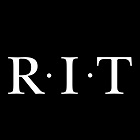- News and articles
- Find usIDP AustraliaIDP BahrainIDP BangladeshIDP CambodiaIDP CanadaIDP ChinaIDP EgyptIDP GhanaIDP Hong KongIDP IndiaIDP IndonesiaIDP IranIDP JordanIDP KenyaIDP KoreaIDP KuwaitIDP LebanonIDP MalaysiaIDP MauritiusIDP Middle EastIDP NepalIDP New ZealandIDP NigeriaIDP OmanIDP PakistanIDP PhilippinesIDP Saudi ArabiaIDP SingaporeIDP Sri LankaIDP Taiwan, ChinaIDP ThailandIDP TurkeyIDP UAEIDP VietnamIDP Corporate
- Social
- English
- Where we operate
- Courses
- Scholarships
- IELTS
- About IDP
- Student Essentials
- News and articles
- Find us
- Find us
- Find nearest IDP offices
- IDP Australia
- IDP Bahrain
- IDP Bangladesh
- IDP Cambodia
- IDP Canada
- IDP China
- IDP Egypt
- IDP Ghana
- IDP Hong Kong
- IDP India
- IDP Indonesia
- IDP Iran
- IDP Jordan
- IDP Kenya
- IDP Korea
- IDP Kuwait
- IDP Lebanon
- IDP Malaysia
- IDP Mauritius
- IDP Middle East
- IDP Nepal
- IDP New Zealand
- IDP Nigeria
- IDP Oman
- IDP Pakistan
- IDP Philippines
- IDP Saudi Arabia
- IDP Singapore
- IDP Sri Lanka
- IDP Taiwan, China
- IDP Thailand
- IDP Turkey
- IDP UAE
- IDP Vietnam
- IDP Corporate
- Social
- Language Switcher
- IDP Education /
- Colleges and Universities /
- United States /
- Rochester Institute of Tech... /
- Master of Fine Arts in Medi...


Location
United States
Qualification
Masters Degree
Fees
USD56884
(2025)
Duration
4 Semester(s)
Next intake
25 August 2025
Entry Score
6.5
IELTSCourse info
This is a two-year, graduate-level medical illustration degree where youll earn a master of fine arts (MFA). The program emphasizes visual problem solving to determine the best approach to communicate a difficult concept. Students also gain real world experience by collaborating with medical researchers and observing live surgery in operating rooms. The program culminates with the production of a thesis project, which requires extensive background research and an original body of artwork on a complex medical topic.
- Scholarships
- Internships
Entry requirements for Rochester Institute of Technology
Complete an online graduate application. Refer to Graduate Admission Deadlines and Requirements for information on application deadlines, entry terms, and more.
Submit copies of official transcript(s) (in English) of all previously completed undergraduate and graduate course work, including any transfer credit earned.
Hold a baccalaureate degree (or US equivalent) from an accredited university or college in a field of the arts, sciences, or education. The undergraduate degree should include one year of general or introductory biology (for biology majors), and a minimum of three advanced biology courses, such as vertebrate anatomy, physiology, neurobiology, cell biology, molecular biology, immunology, microbiology, genetics, developmental biology, or pathology.
Recommended minimum cumulative GPA of 3.0 (or equivalent).
Submit a current resume or curriculum vitae.
Two letters of recommendation are required. Refer to Application Instructions and Requirements for additional information.
Not all programs require the submission of scores from entrance exams (GMAT or GRE). Please refer to the Graduate Admission Deadlines and Requirements page for more information.
Submit a portfolio. Refer to Graduate Portfolio Requirements for more information.
Submit a personal statement of educational objectives. Refer to Application Instructions and Requirements for additional information.
IELTS - 6.5
TOFEL ibt - 79
Application Deadline
The application deadline isn't available Speak to an IDP counsellor for more detailed information
Further information
If you aren't eligible for the above entry requirements, you might ant to explore pathway options at Rochester Institute of Technology. If you want to find out more, speak to our counsellors.
THE World Ranking
601st / 1250
THE World RankingWhat our students think
We’ve haven’t received any reviews for this institution yet.
Recommended for you
- THE World Ranking:70
- Masters Degree
- Charlotte , United States
- Next intake:08/2025
- Entry Score: IELTS 8.0
- USD36644 (2025)
- THE World Ranking:116
- Masters Degree
- Columbus , United States
- Next intake:07/2025
- Entry Score: IELTS 8.0
- USD43530 (2025)
- THE World Ranking:70
- Masters Degree
- Charlotte , United States
- Next intake:08/2025
- Entry Score: IELTS 8.0
- USD36644 (2025)
- THE World Ranking:116
- Masters Degree
- Columbus , United States
- Next intake:09/2025
- Entry Score: IELTS 8.0
- USD43530 (2025)
- THE World Ranking:70
- Masters Degree
- Charlotte , United States
- Next intake:08/2025
- Entry Score: IELTS 8.0
- USD36644 (2025)
- THE World Ranking:70
- Masters Degree
- Charlotte , United States
- Next intake:08/2025
- Entry Score: IELTS 8.0
- USD36644 (2025)
- THE World Ranking:70
- Masters Degree
- Charlotte , United States
- Next intake:08/2025
- Entry Score: IELTS 8.0
- USD36644 (2025)
- THE World Ranking:18
- Masters Degree
- New York , United States
- Next intake:09/2025
- Entry Score: IELTS 8.0
- USD48576 (2025)
Your action plan
Step 1
Shortlist your courses
Choose the best three courses you’re most likely to pursue.
Step 2
Check your eligibility
Get an instant in-principle offer for courses with the IDP FastLane tag.
Step 3
Apply through IDP Live
Fill out the form once and use it to apply to multiple courses.
How does IDP FastLane work?
With the FastLane 'Offer in Principle', you'll know in minutes if you'll be accepted!
Select an institution and course
Create your academic profile
Submit your application for an 'Offer in Principle'
Your chosen institution(s) will send you a decision in minutes!
Get ready to apply with an expert counsellor




